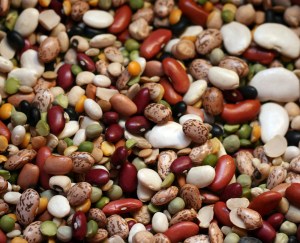This blog came up in my Twitter feed and it immediately caught my attention. The writer, Russ Parsons, reports that we do not have to soak dried beans before we cook them!! What?! Duh? This is new information to me. In the interest of convenience, I buy canned beans. I don’t have time to soak beans over night, change the water, soak some more, change the water, boil the beans, change the water….
This blog is telling me that I don’t have to do all of that. I can simply add dried beans to a pot of water and boil for 1 hour and 15 minutes and voila they are done! But, with 3 boys, a husband and working full time I still don’t have time to boil my beans for that long before I add them to my recipe.
My BFF, Robin, is a dietitian living in Salmon Arm BC. She just got a pressure cooker primarily for cooking dried beans. Robin was visiting her brother in Brazil last year and his girlfriend prepared many bean dishes. Robin learned that Brazilians use pressure cookers to facilitate the preparation of traditional bean based meals, like black bean soup. Take a look at the Brazilian healthy eating food guide for some inspiration.
Healthy diets include a lot of plant based foods such as fruits and vegetables; grains like oats, millet, bulgur; and legumes like kidney beans, pinto beans, lentils and split peas. Plant based foods are sometimes not so convenient and they do need preparation. However, the benefits are worth the trouble. Plant based foods are low in calories, high in essential vitamins and minerals and contain fiber which helps to regulate blood sugar. One unfortunate side effect to eating beans is flatulence. The good news is, the gut does acclimatize to legume intake and eventually the flatulence will diminish.
I regularly make burritos with pinto beans that I heat with sautéed onions and tomatoes. I have never cooked this recipe using dried, then cooked beans, but Robin promises the flavor is worth it. She is probably right because I also make a delicious dal recipe with sautéed onions, turmeric, curry, tomatoes, dried red lentils and water. This recipe cooks very quickly and does not require soaking the lentils. Red lentils cook fast as opposed to green lentils which take much longer.
If you have any legume recipes to share, please leave them in the comment section. Do you use a pressure cooker to prepare beans? Let us know in the comments section too!





